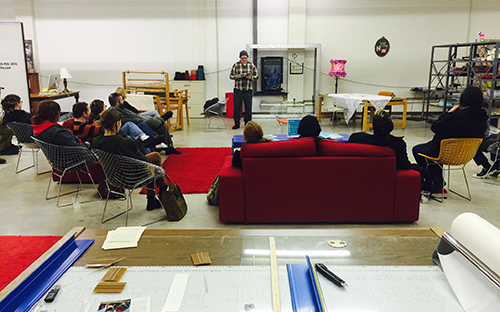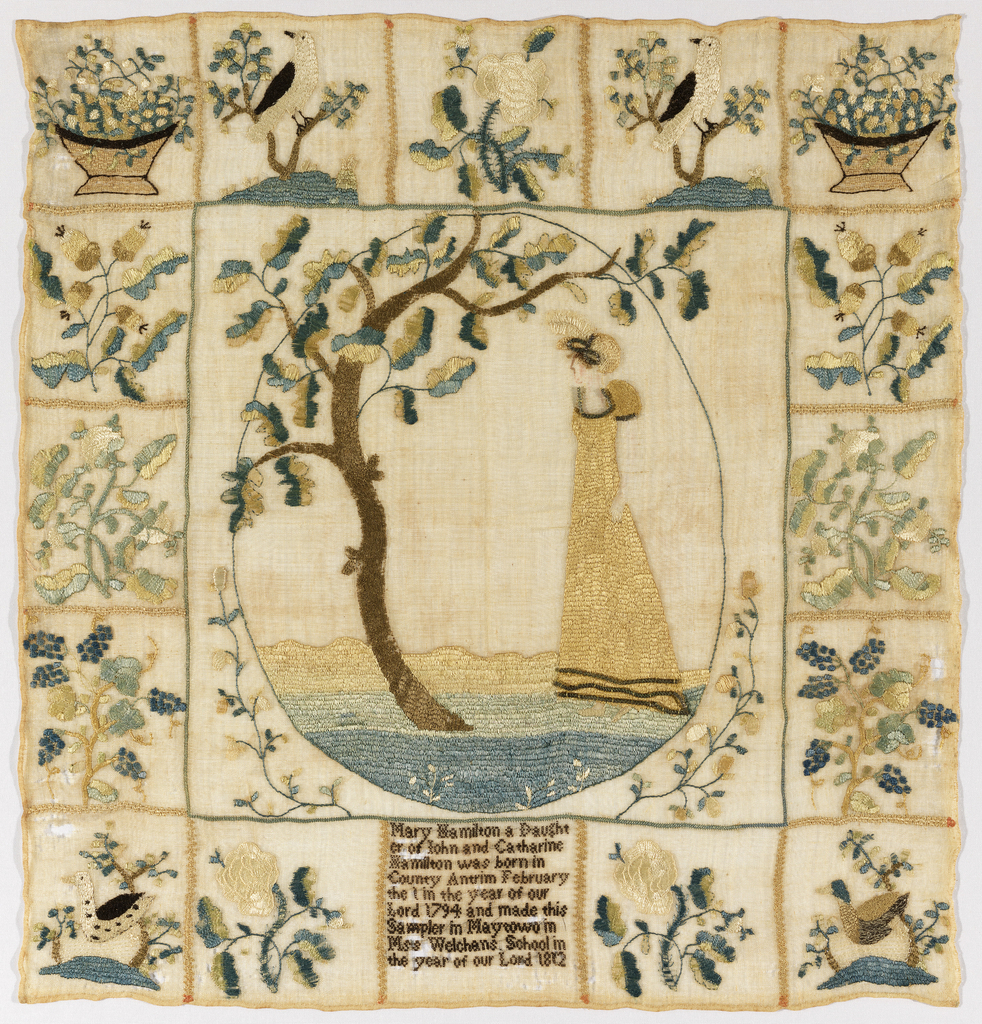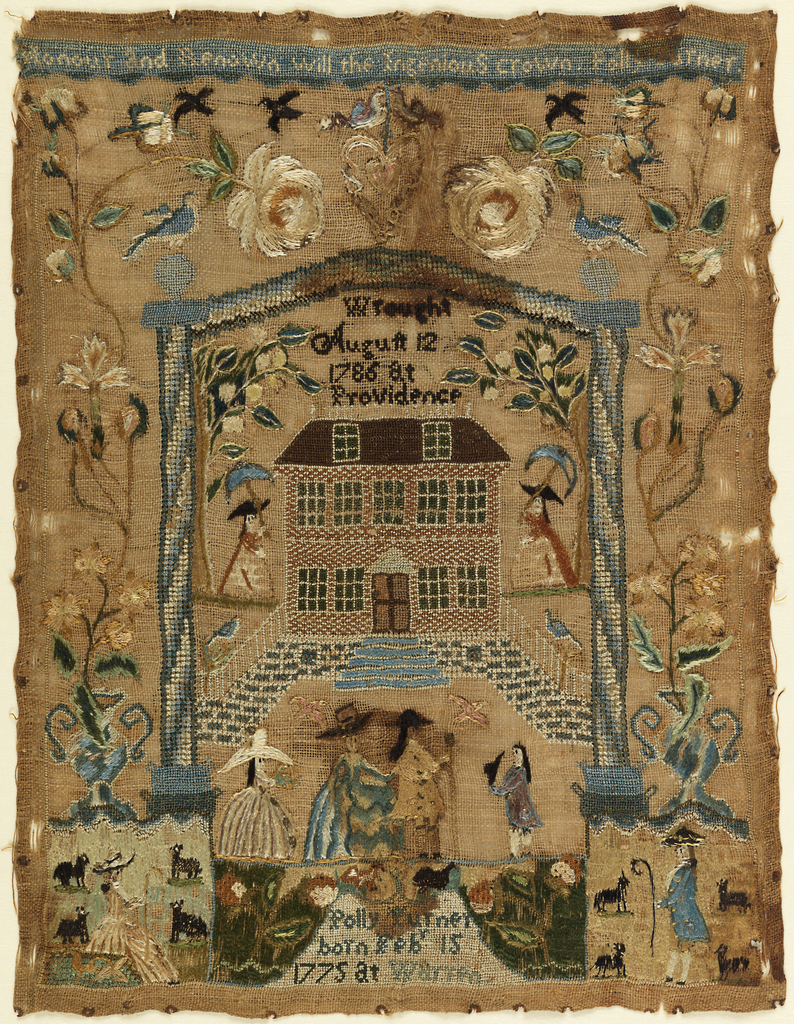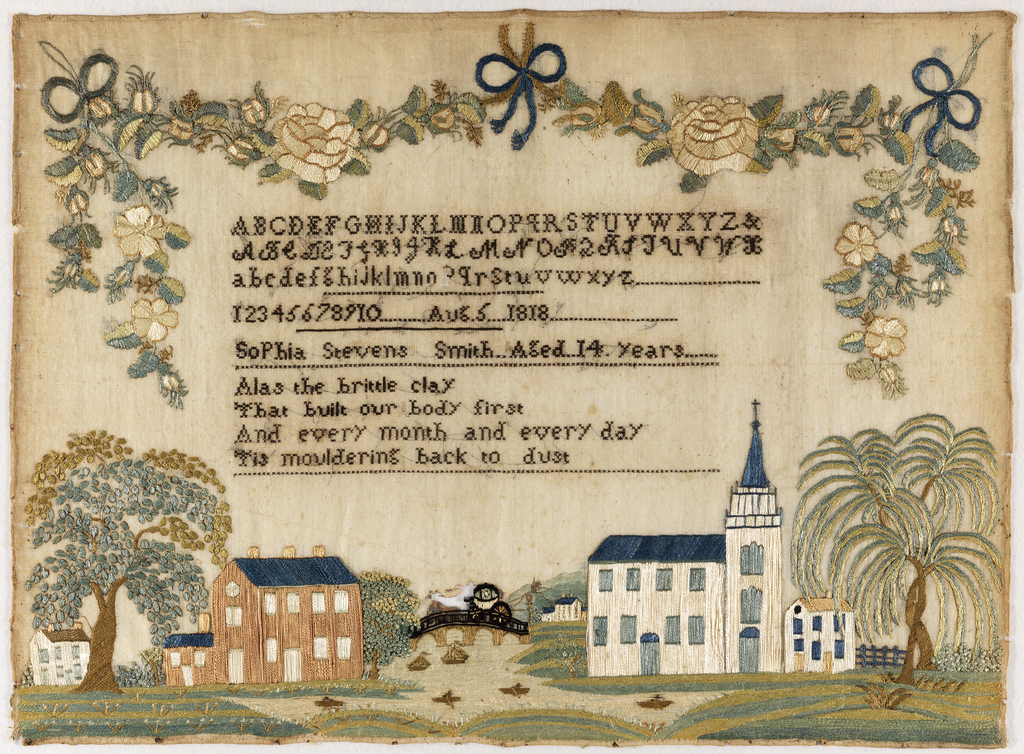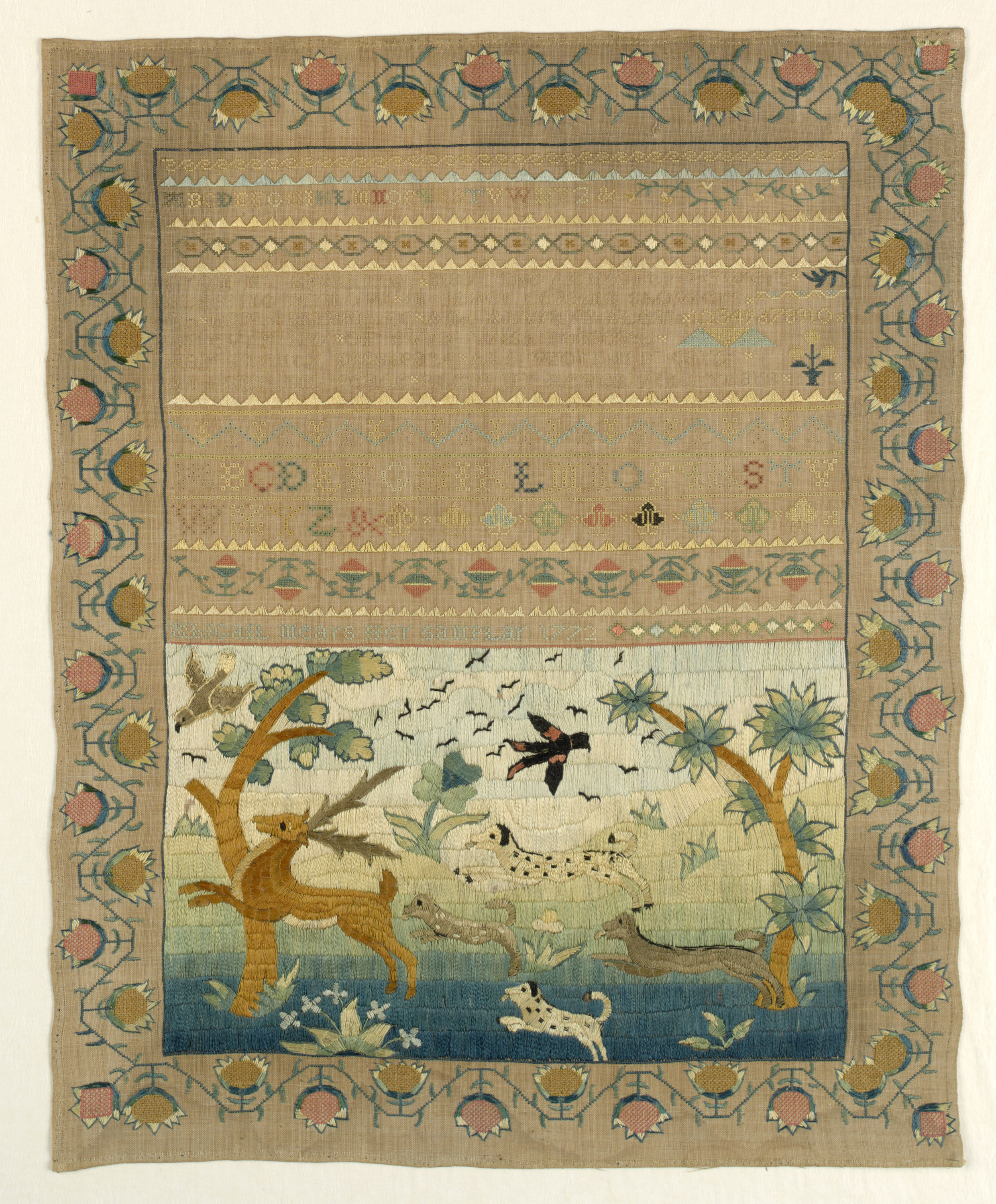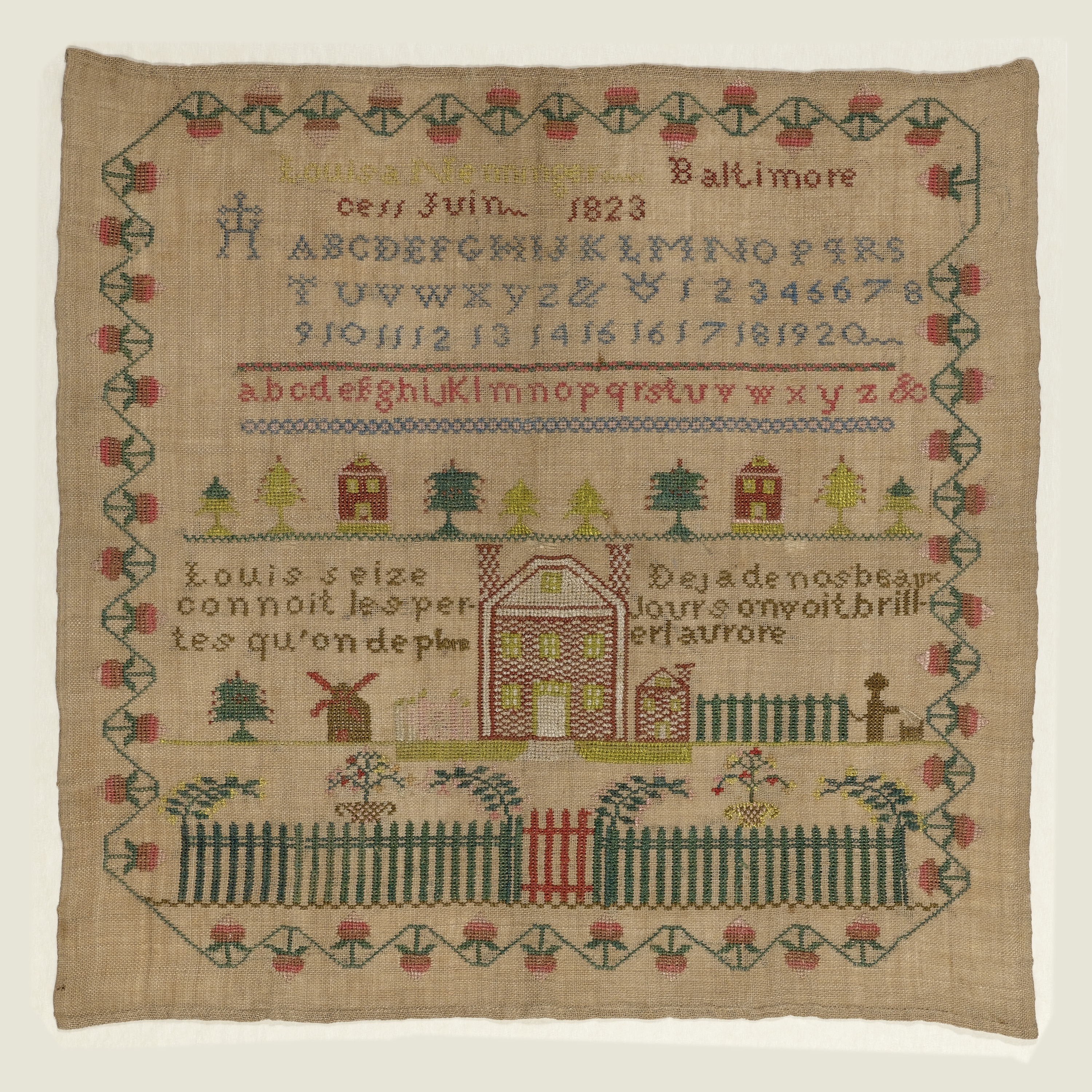Interview with Corinne Hill, director of the Chattanooga Public Library, who created a unique maker space and civic commons in the Library's downtown branch.
This sampler was worked in 1812 by Mary Hamilton at the Maytown, Pennsylvania, school of Catherine Welshans (who became Catherine Welshans Buchanan after her 1813 marriage). The central scene depicts a woman, fashionably attired in a feathered headdress, standing beneath a tree. The border is made up of compartmentalized motifs, including baskets of flowers, flowering...
In 2012, math professor Laurie Rubel developed, with support from the National Science Foundation, the City Digits project to help high school students learn math by examining urban injustices in their own New York City neighborhood. Partnering with civic designer Sarah Williams, the team designed a set of place-based learning tools to integrate richer data...
In conjunction with the exhibition By the People: Designing a Better America, Cooper Hewitt collaborated with IBM to host a hands-on workshop that explored design thinking and the tools required to meet social, economic, and climate change challenges. Guest designers and By the People exhibitor Anthony Schloss from Brooklyn’s Red Hook WIFI initiative shared how their...
Polly Turner’s sampler, worked in 1786, is one of the earliest known examples made at Mary Balch’s school in Providence, Rhode Island. According to tradition, the sampler’s five-bay house represents the residence of the president of Rhode Island College. Polly’s is the first known needlework depiction of the house, which appears on at least six...
In 2013, architectural designer Deanna Van Buren and social scientist Barb Toews established Designing Justice+Designing Spaces (DJ+DS) to facilitate the design of more restorative and healing criminal-justice environments through community engagement in jails and prisons. Their work is featured in the exhibition By the People: Designing a Better America, curated by Cynthia Smith, Curator of...
Sophia Smith’s sampler is part of a distinctive group of Wethersfield, Connecticut, samplers made at two different schools during the first quarter of the nineteenth century. Earlier examples were probably worked at the Abigail Goodrich School, which operated from around 1804 to 1815. Sophia’s is one of a later group of samplers, most likely made...
This sampler, worked by Abigail Mears in 1772, is related to a group of embroideries known as the “fishing lady pictures.” The name originally referred to Boston needlework featuring the same fishing lady, but now encompasses a variety of related pastoral compositions, with or without the fishing lady. From the 1760s, the same types of...
French-speaking Catholics, fleeing the bloody revolutions in France and the Caribbean, settled in large numbers in the Baltimore area. In 1791, priests from the Parisian Society of Saint Suplice established a seminary in west Baltimore conducting religious services in French, and it soon became the center of a rapidly-growing French community. Among the émigrés, both...
